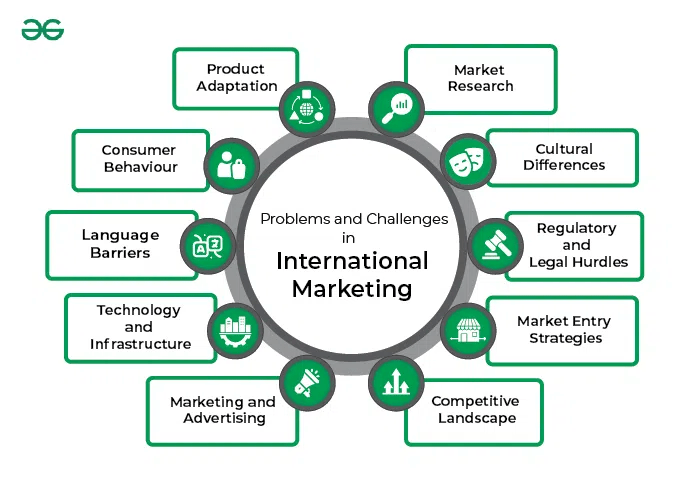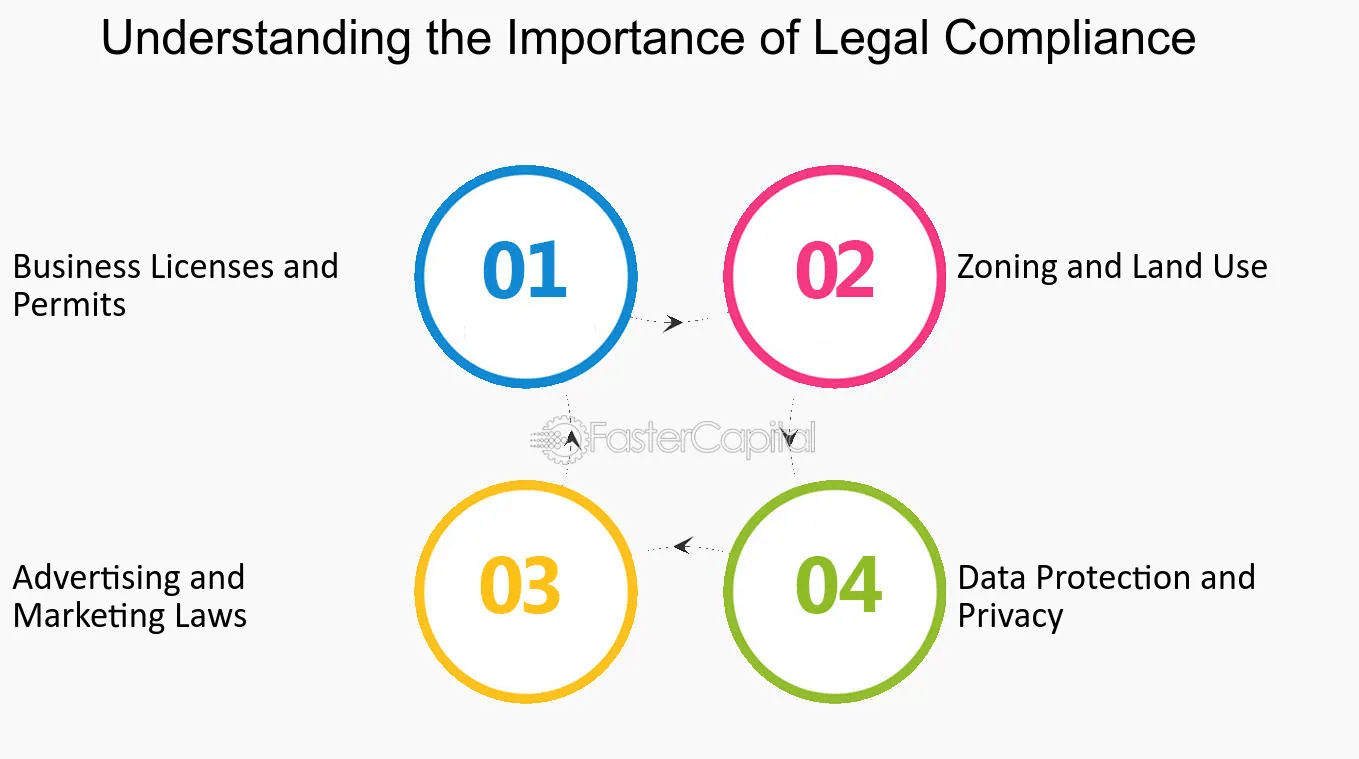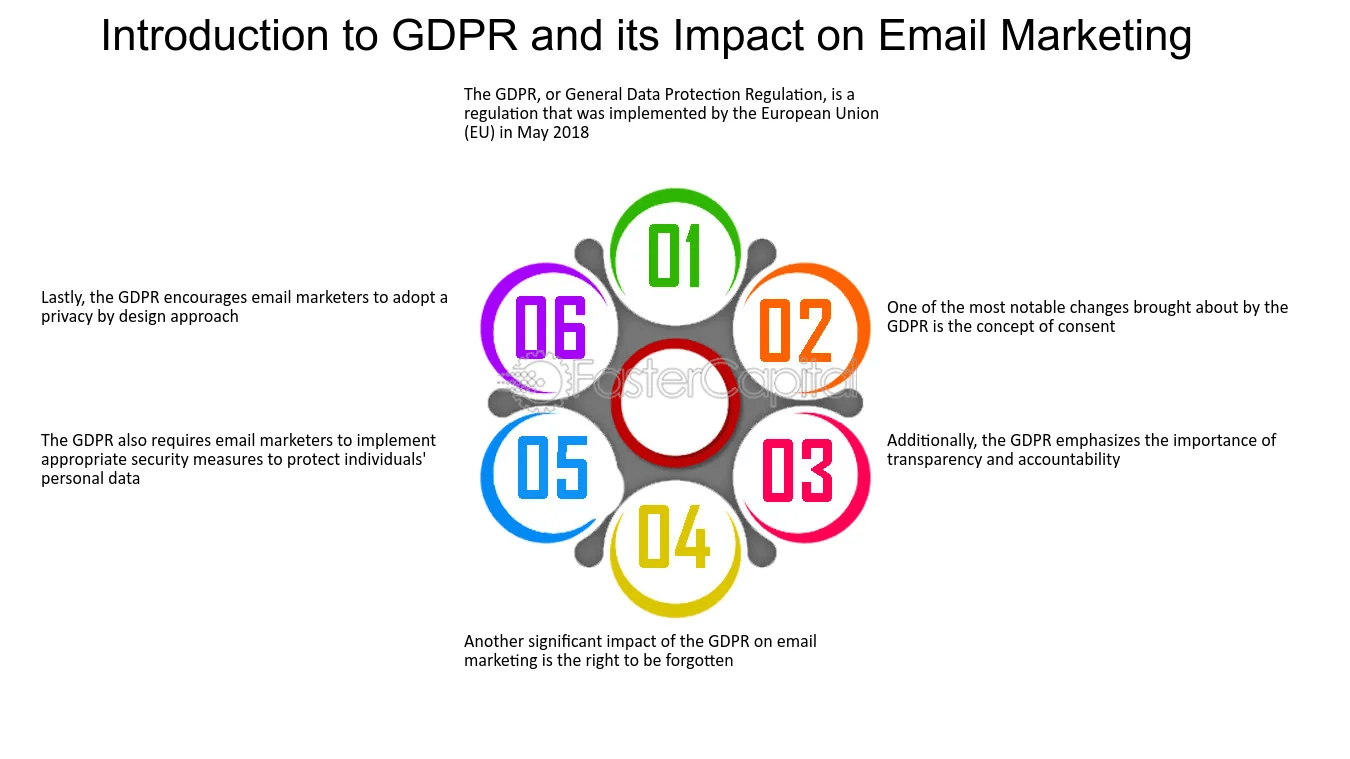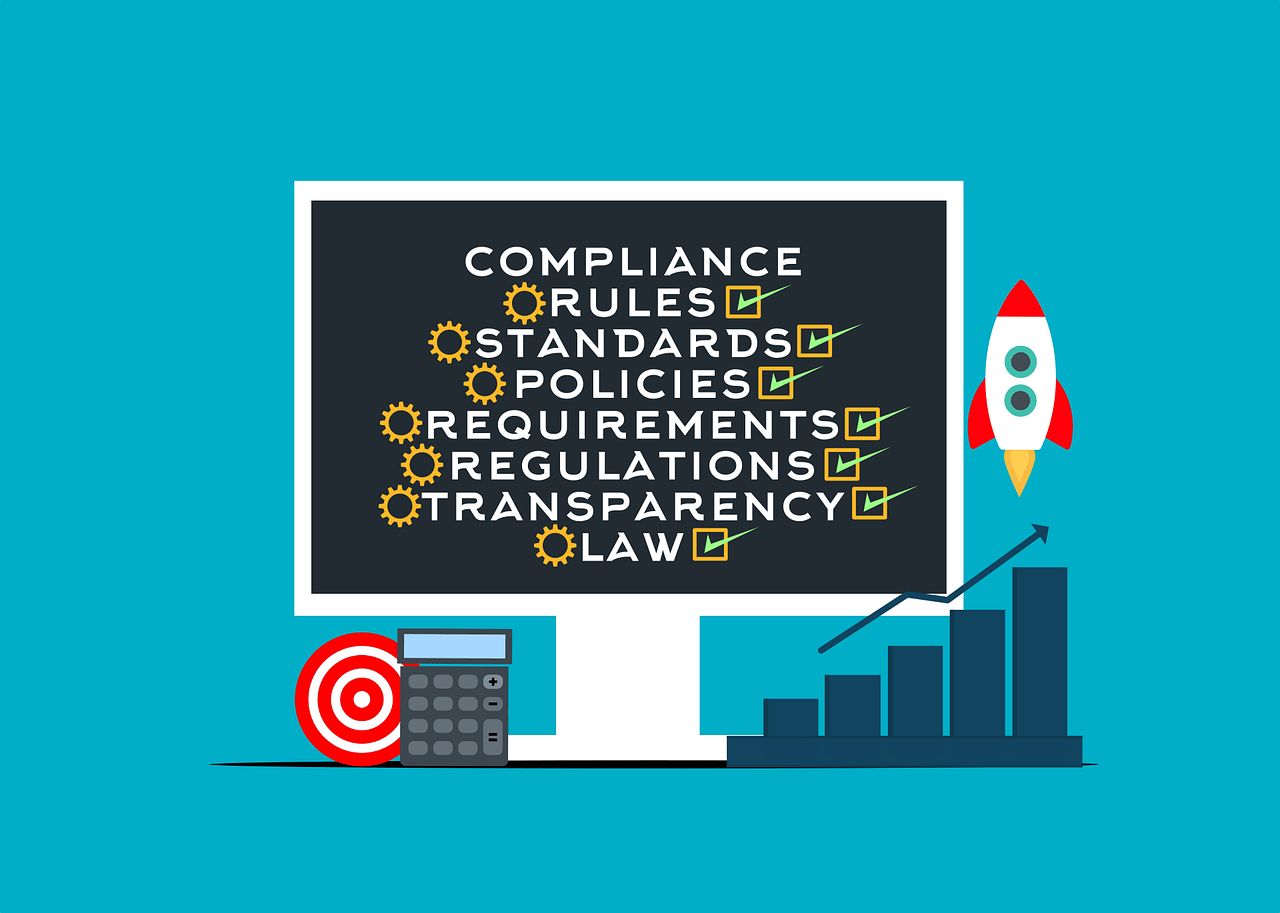Compliance will already play some role in your business. You may handle sensitive medical information or credit card details. Even customer data has several laws and regulations regarding how it’s collected, stored, and used.
Failure to comply with the various laws and regulations can lead to punitive financial penalties and can also damage your brand’s reputation.
How do you approach compliance in your marketing efforts though? Marketing and advertising can be covered by specific regulations and can also see some crossover from the other compliance within your business.
Just what is marketing compliance? How does it affect the way you approach marketing and what steps can you take to ensure all your efforts comply with the regulations relevant to you?
What is marketing compliance?

Image sourced from Drata
Marketing compliance involves being sure that any of your marketing efforts meet with the laws and standards that apply in your case. Those efforts can cover everything from adverts to posts on your social media platforms (or on other’s pages and groups).
To ensure compliance, businesses will usually create a policy (or set of guidelines) that combines any external regulations with their own internal guidelines. As well as any industry, state, or federal laws, you also want a consistent voice that communicates your brand’s vision and voice.
There are several keywords and phrases you should consider when looking at marketing compliance:
- Data protection
- Transparency
- Legal governance
- Integrity
- Ethical practice
When you implement a marketing compliance policy, don’t think of it as just another task. It should be an integral part of everything from data collection and use to how you engage with customers and potential customers to how you advertise to the public at large.
Marketing compliance considerations

Image sourced from Kaizen
If you’re building a marketing compliance policy – or reviewing an existing one – then there should be several areas that should be looked at closely and thought about.
Data
Customer data, and other data, can be worth its weight in gold. It informs many areas of your business from inventory management to those all-important marketing efforts. You probably handle an enormous amount of data and a good data integration process can help you manage it.
Your use of data (as well as collection and storage) can be governed by both legal frameworks such as the EU’s GDPR or the California Consumer Privacy Act (CCPA) but there are also ethical considerations you should include.
If your business engages in dropshipping on Amazon, or other platforms, it’s essential to ensure compliance not only with data protection laws but also with the platform’s policies regarding customer information handling.
If a company is seen to ‘misuse’ data (even if it does not contravene any laws/regulations), then public perception of that business will be negative and your brand reputation may suffer.
Industry regulations
This is perhaps one of the most important considerations, as failure to comply can lead to severe penalties. You need to be aware of any industry-specific laws and regulations that apply to you.
For example, if you operate in the healthcare sector, then you need to comply with HIPAA (Health Insurance Portability and Accountability Act).
Depending on the sector you work in, you may need to be aware of multiple regulations. These can exist at federal, state, and even city ordinance levels. An example of the latter would be city zoning which would dictate operating hours or noise levels.
Regulations in other markets

Image sourced from Geeks for geeks
If you plan on operating internationally, then you need to be aware of any differences in other markets that could mean your marketing there has to be different from that in your ‘home’ territory. It’s important to remember that compliance needs can change over borders.
You not only have to consider cultural differences so that you avoid appearing offensive, but even well-known brands might mean something different in other countries. For example, the search engine Bing is a global brand, but in China, ‘Bing’ means ‘illness’.
Having a level of cultural awareness of global markets is essential to avoid damaging your brand’s reputation or even simply leaving it open to some form of ridicule.
Marketing regulations
If you’re leading a marketing team, it might seem like there are countless regulations to be aware of but that awareness can help protect your brand reputation, not to mention helping it avoid huge financial penalties.
In the USA, marketing compliance is governed by the FTC (Federal Trade Commission), who have sets of rules ranging from ethical and honest advertising to how a business markets its products to minors.
Your organization likely has some form of internal audit process that scrutinizes processes, systems, and so on. Marketing teams should also be auditing every aspect of their marketing efforts to ensure nothing falls foul of any applicable regulations.
Incorporating corporate compliance into this framework ensures that your company not only meets marketing standards but also aligns with broader corporate governance requirements.
10 Steps in Ensuring Your Brand’s Marketing Compliance

Image sourced from Faster Capital
It may seem that a marketer’s job is endless when it comes to compliance. But ensuring your organization adheres to the various relevant laws and regulations can help your brand avoid damage not to mention substantial fines.
Even the biggest brands have faced punishment, including Instagram who were fined $403 million under GDPR laws for breaching the privacy rights of children. So don’t panic too much if you find yourself with minor infringements, just focus on ensuring they don’t happen again.
If you do decide to audit your current marketing practices, or if you’re building a marketing compliance policy from scratch, here are ten steps that can help guide you.
Ensure transparency
Transparency is one of the foundations of ethical and compliant marketing. That can cover every aspect of your efforts from pricing (including any shipping costs), product information, and any terms and conditions you apply to a sale.
One way to make this easier is to have a library of disclaimers and information provisions. This can take the form of different templates that you can customize to the different situations you encounter. Also, ensure that any external influencer marketing meets your guidelines as well as needs.
Make a checklist of all the points that have to be included in any marketing material and have that material checked before posting or releasing. You can also, to an extent, automate this process using marketing project management software that can identify what information is needed and when.
Collaborate
Another step toward achieving marketing compliance is to ensure that you collaborate with other departments that can offer insights. For example, involving your legal department to oversee any marketing content and provide advice on what you can and cannot say.
Collaboration is always helped by technology and this is another area where marketing project management software can help you work together. You can construct a marketing plan for Product A, enter it into your system, and then anyone involved can review it.
Working together can be an effective way of making sure your marketing efforts comply with any relevant laws and regulations. Don’t operate in a vacuum where mistakes could be made, a team effort can avoid non-compliance.
Have a robust audit trail

Image sourced from Faster Capital
Mistakes will be made, especially when having to consider so many factors regarding compliance. A good marketing compliance framework should have a robust audit trail so that when mistakes do happen, you can easily identify where they happened and rectify them.
Every part of your marketing campaigns should be recorded, from any artwork you use to written content to who gave any final approval. An audit trail not only helps with compliance, it can be useful for future campaigns to see who and what informed any choices.
Yet again, this is where marketing project management software comes into its own. It can help you record and organize everything you do when it comes to marketing and can also keep any data and information secure (which can meet other compliance requirements).
4. Use tech where needed
Technology can be extremely useful in all areas of your business and you will likely already be using various AI-powered tools in your marketing department. These can include Facebook Business Suite for some of your social media marketing or Google Analytics to give you insights into campaign performance.
Additionally, implementing robust email security measures can safeguard your communication channels, ensuring compliance with data protection regulations and protecting sensitive information exchanged with customers and partners.
Using technology can help you check that any material meets your compliance needs (as well as marketing needs). It can also help you define responsibilities when it comes to signing off campaigns or content and ensuring that everything you do complies with relevant regulations.
The idea of using tech should not preclude human action or indeed hard copies of any material that will inform your compliance work. Printed material can be useful in scenarios such as meetings where compliant marketing is being discussed.
5. Stay updated
As well as internal monitoring, you need to be focused on any changes that could happen on a regular basis. While some changes to laws and regulations might be communicated directly to you (or be in the news), others might slip under your radar if you’re not looking for them.
This is an area where things such as industry-specific literature and conferences can help. They may not only highlight any changes to compliance needs, but also discuss ways that businesses can deal with those changes.
If and when things do change, you need to be sure that you update any current marketing work to reflect those changes. If you have a live campaign that falls afoul of any new regulations, you will need to make necessary changes to ensure compliance.
6. Training
No matter what size your marketing team is, thorough training is another step towards marketing compliance and protecting your brand’s reputation. With every member of your team knowing what they can and can’t do, you are less likely to face any compliance issues.
As with other types of training, it’s essential to be person-centric. That means providing different types of training such as in-person or online. It also means offering different training speeds and resources to suit every member of your team including any remote/hybrid workers.
Seminars, or webinars, can also be useful as they give people the opportunity to ask questions and discuss how to ensure any marketing content complies with everything necessary. You could also invite guests, either from external agencies or from your legal department.
7. Maintain quality control

Image sourced from Faster Capital
When it comes to things such as SOC 2 compliance, your organization will have a strict set of checks and balances. You should be applying the same sort of guidelines when it comes to your marketing efforts.
You will already be checking the quality of the actual content and asking questions like ‘Will it engage our customer base?’ Expand your quality control process to ask other questions such as ‘Does it meet advertising regulations’ or ‘Is it honest?’
Combining automated systems with the human touch can help streamline this process and help you create workflows that highlight any errors and also maintain consistency. Even using a single word could see you fall short of compliance and automation can flag these seemingly small mistakes.
8. Be honest and accurate
While your sincere belief in a product or service can be admirable, you need to be cautious that any enthusiasm doesn’t lead to wild or unsubstantiated claims. Keeping all your content and claims honest and accurate should be an integral part of your quality control process.
Any claim needs to be evidence-based and also transparent. For example, if you were marketing toothpaste and claimed that 8/10 dentists recommended it, you’d have to also note how many dentists you actually surveyed.
If you make any dishonest or unsubstantiated claims, then your brand reputation could be badly damaged when they’re exposed. This extends to comparisons with other products or when you use testimonials.
9. Streamline everything
There’s a lot to keep track of. Not only do you need to focus on your marketing messages actually connecting and engaging with customers, but you also need to ensure that those messages are consistent and meet all compliance requirements.
Streamlining your processes and workflows is an essential part of how you work. This is again an area where technology such as project management software can help. With a streamlined workflow that logs and records every step of the process, you can maintain quality and compliance.
10. Build a compliance culture
It may seem that there’s a lot of work involved in ensuring compliance, and there is, but one of your goals in building a compliance framework is to ultimately create a compliance culture.
By doing so, it becomes second nature to think about how your marketing messages, whether on social media or anywhere, meet all the regulations, laws, and internal guidelines that inform your work.
Combinations of quantitative and qualitative analytics can help you track progress and can also highlight areas where there might be a need for improvement. That perfect compliance process won’t happen overnight but you can refine it through gradual improvements.
The takeaway

Free to use image sourced from Pixabay
Marketing compliance is a complicated maze but it is a navigable maze. The thing to focus on is that a failure to comply with the various laws and regulations could lead to both a damaged brand reputation and punitive fines.
By building a compliance framework and streamlining your processes, you can have a system of checks and balances that will highlight any mistakes before they are released. As well as the formal rules and regulations, you should also develop your own internal ethical guidelines.
Ultimately, a failure to meet compliance needs might not only lead to financial penalties, it could damage your brand’s reputation and lead to lost customers and revenue. On the opposite side, gain a reputation for honest and transparent marketing, and you could see those sales figures improve.

